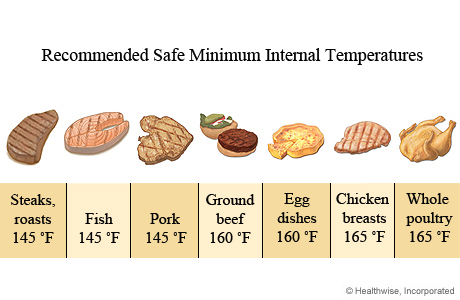Here are some signs to look for when gauging whether or not something is done. It also helps to take some of the guesswork out of cooking as you make your way from trial to triumph.
Most seafood is ready when it turns from translucent to opaque or in the case of shrimp, when it turns pink. Tuna of course should be served rare.
Poultry is done when it turns from translucent to opaque but it needs to be cooked thoroughly so unless it’s a thin boneless cutlet you’ll need to cut into the thickest portion at the center and cut into it. If it’s no longer pink and the juices run clear, it’s cooked. For greater accuracy, take a reading with a meat thermometer inserted into the thickest portion. Poultry (and pork) need to reach 160 to 165 degrees. Duck breast on the other hand is best served medium rare or about 130 degrees.
When it comes to beef or lamb, personal preference rules so cook it how you like it. 120 – 125 is rare; 130 – 135 is medium rare; 140 to 145 is medium; 150 – 155 is medium well; 160 to 165 is well done
After cooking beef, chicken or poultry, let them rest for 5 minutes before cutting them to insure the juices won’t run out.
When you’re cooking a thick cut of beef, chicken, fish or pork a great trick that professional kitchen use all the time is to pan sear it first in a sauté pan to get a nice, golden crust on the outside and then finish cooking in the oven.



